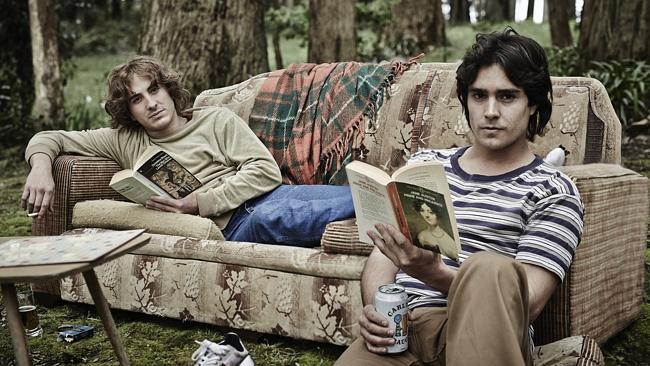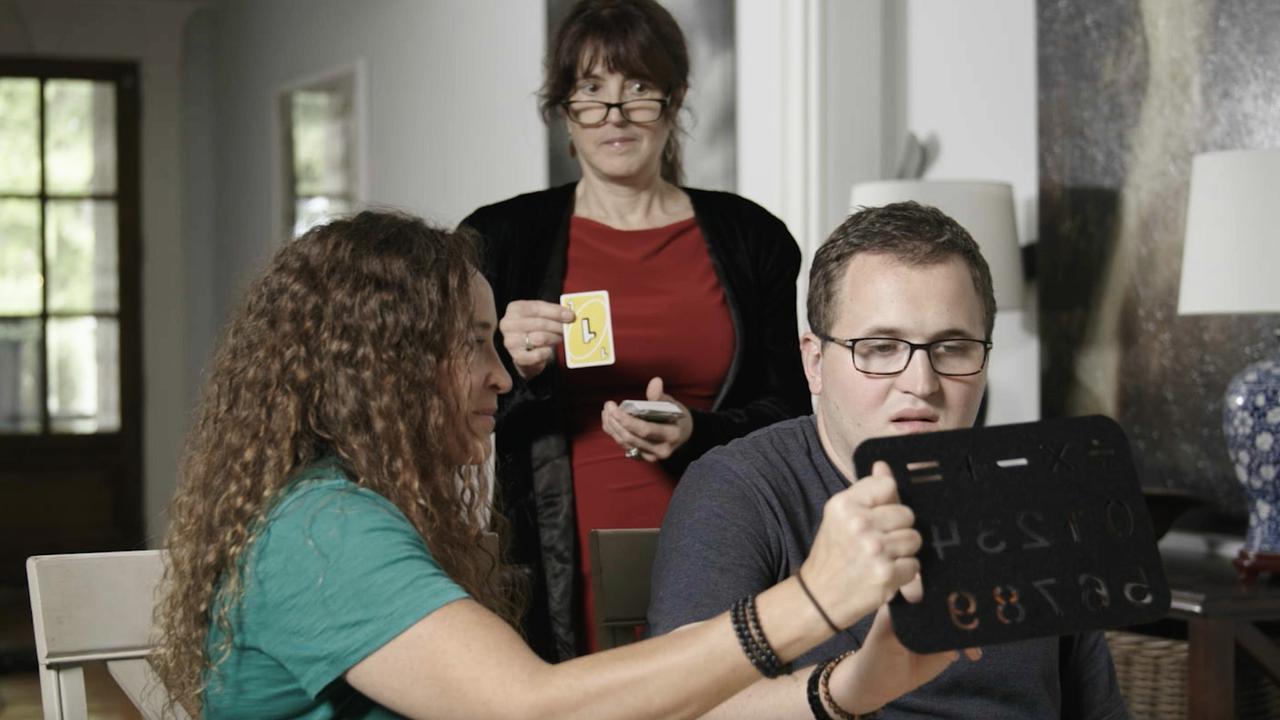Holding the Man: Aids and 1980s gay scene in Neil Armfield’s film
A new film is bringing a much-loved and heartwrenching tale about Australia’s 1980s gay scene to a wider audience.

It was the type of publicity money never buys. “Sitting on the plane crying my eyes out at the end of this book,” posted British singer Sam Smith to his 3.7 million Instagram followers earlier this year. The 23-year-old Grammy winner, who came out last year, was en route to Los Angeles after an Australian tour, reading a book passed to him by a friend at EMI Music. “Honestly, I can’t beg you all enough to read this. It’s the most incredible thing I’ve ever read. Life changing. If only we could get all the homophobes in the world to read it.”
Smith’s post was about a well-thumbed Penguin paperback, Holding the Man, a memoir by Tim Conigrave set in Melbourne and Sydney of the 1970s and 80s.
A few months later, Smith was back. “Holding the Man. I’m going to try to put this into a short paragraph. But I could talk about this all day. I can’t tell you all enough how much this book and film have meant to me over the past half a year. This project and piece of work is the most breathtaking thing I have ever seen.”
Smith had discovered the power of a story first published as a book in 1995 (when Smith was three), as a play in 2006 and finally as a Neil Armfield-directed film, which opened on Thursday. It is one of those works to which the epithet “much-loved” is quickly attached. At high school, Conigrave (Ryan Corr) falls in love with John Caleo (Craig Stott), captain of the AFL team. Sarah Snook, Guy Pearce and Kerry Fox also star in a film that is a coming-of-age tale, a coming-out story, a high-school romance, a family drama, a grand love affair, a chronicle of 80s gay Sydney and an AIDS tragedy.
The book has never been out of print. The play toured the world. Smith, who saw a pre-release screening staged for his benefit in London, is not the only gay man to experience a powerful reaction to the story. In a cafe near his Darlinghurst home, Cameron Huang, property developer turned film producer, frowns slightly as he does some mental arithmetic. Out of the film’s $7 million budget, how much did he contribute? In his head he crunches the numbers. “About $1.5m,” he answers and smiles.
The 43-year-old, who moved to Sydney with his parents and two younger brothers from Taipei, came to the story via the play in 2007. “The calendar entry for my diary next day was: ‘Ring my friends and find out how to make a movie.’ ”
And so he eventually did, connecting with Tommy Murphy, who wrote the stage adaptation, and later with Goalpost Pictures. “It was for a very personal reason, I knew that story had to be told,” Huang says. “This story could have been my story. Had I been five years older I would have been caught up in the whole AIDS crisis. I would have been experimenting with sex and might not have been here today.” Eight years later, here we are. “Holding the Man went a lot faster than The Sapphires,” says Goalpost Pictures producer Kylie du Fresne, comparing the new film with her previous multi-award-winning project.
This she attributes to Huang. “If it wasn’t for Cameron’s involvement this film would have struggled to raise the money in the time frame and the manner in which it did. It makes a world of difference.” Producers such as Huang are “a rarity for film financing in Australia but an absolute gift”.
Holding the Man arrives in cinemas when the issue of marriage equality has led to somewhat fraught times for the gay community. Can a gay film be a hit? “It feels that Holding the Man is arriving at the right time, not just for the LGBTI community but [as a story] that connects with a wider community,” du Fresne says.
The fact corporate advisory firm Pricewaterhouse Coopers sponsored the film and hosted drinks for 150 friends and clients before the world premiere at the Sydney Film Festival in June seems to bear this out.
The film certainly demystifies one aspect of gay life. “I sat there with some of my colleagues and clients as they watched their first gay sex scene,” says PwC chief of staff James Collins.
Let’s be clear: whether you are gay or straight, a father or a mother or a partner, Holding the Man is a heartfelt but at times confronting watch. Raw family conflict is on display, as is gay sex, as is intense love, as is AIDS. And in the 80s, where there is AIDS, there is death.
It was too much for some at the premiere. One television actor sitting near this writer at the premiere upped and left midway.
While the Conigrave family attended the world premiere, the Caleo family did not.
Years ago John’s brother Anthony Caleo had praised the play when he saw it: “All of the fondest memories about John floated through my mind while I absorbed the play. I feel complete after seeing this work of art. I now have closure.” But there was talk the family had some concerns about the project and that John’s father Bob, played by Anthony LaPaglia, who resisted his son’s relationship, requested that he not come across too badly. The producers had to tread a tricky path. “We wanted to give the respect to both families, it was their lives and their sons and it was a traumatic experience and still is a traumatic experience. They lost their sons. Neil’s take on Bob was that this was a man who was in grief,” says du Fresne.
Both families were supportive of the project and the boys’ Catholic high school, Xavier College, the setting for crucial early scenes, helped to establish connections, she says. “There are old boys who work there now who were at school with Tim and John. There is a great deal of ownership of the book from the school.”
Du Fresne wants the film to connect deeply with the gay community, “who have loved and cherished [the story] for many years”, but also “connect with a broader audience”.
“We haven’t told this story before on screen: of this period, of what was happening in Australia. If you lived through it and had many friends pass away, it would be challenging to watch it. We hope that it’s also a cathartic experience for the viewers and that there is also some hope and some love and some light at the end of the film.”
Holding the Man may well join The Sum of Us and The Adventures of Priscilla, Queen of the Desert as a success story in gay Australian cinema. But it is a more frank and far more powerful film than the other two.
At the premiere, several gay men thought the frank sexual scenes meant the film would “fail the parental test”.
The exploration of sex is a defining element of the book, du Fresne explains. “Tim talks about that with utter frankness and honesty but we were very clear in our minds that we didn’t want to end up with an R-rated film for all the reasons you can imagine.
“It is very important that gay sex was shown in a way that is not very often depicted in cinema — that it was loving, although it is so often about desire. There’s plenty of heterosexual sex in the cinema that is far racier. What we are showing is not particularly graphic but it’s just that it’s so rarely [shown] in the cinema.”
Back in Darlinghurst, Huang, like other interviewees, pulls himself back to focus on the core of the story. “It’s not an AIDS story. It’s just a beautiful love story,” he says.
From his corporate perspective, Collins, who was an investor in the film, hopes for a favourable reception to the film but sounds a note of caution. “I think there is still a very high level of homophobia that exists. It’s not overt but there is still a long way to go in terms of acceptance.”
Holding the Man is open nationally.


